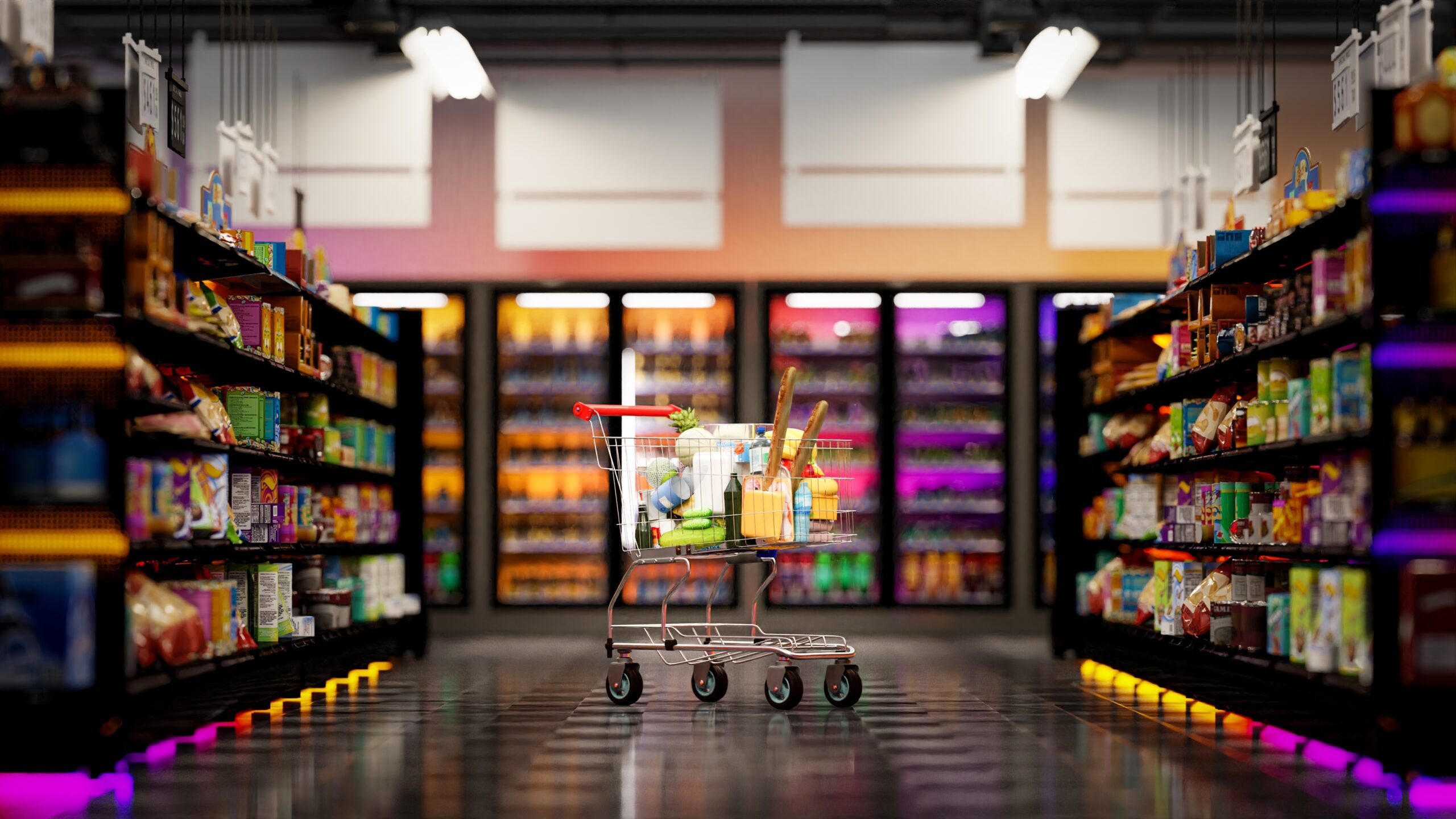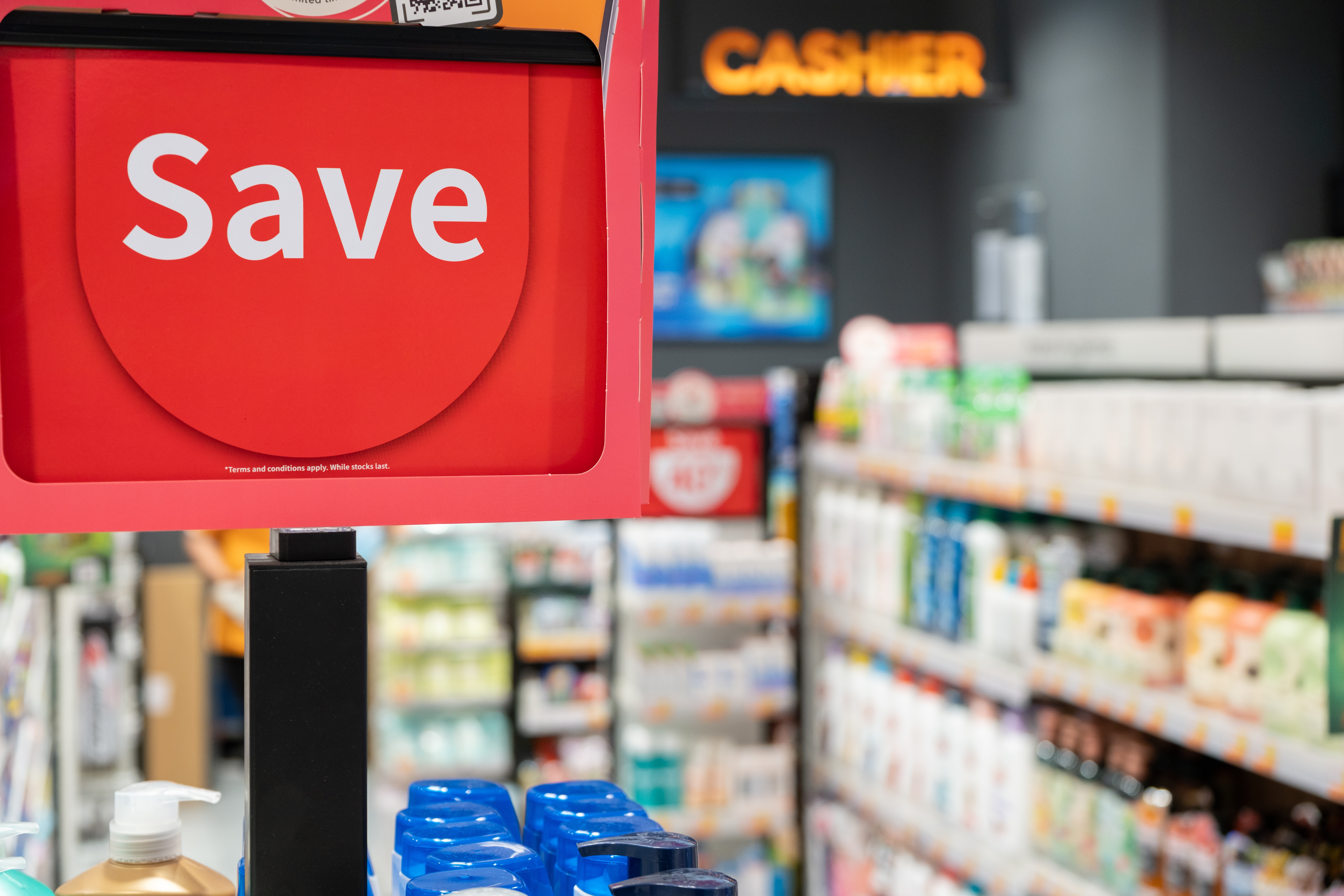As the economic landscape experiences fluctuations, one topic of increasing concern is inflation and its far-reaching effects on consumers and businesses. Specifically, the realm of consumer goods, particularly the choice between private labels vs national brands, is facing a noteworthy shift. This blog post will explore how inflation impacts the competition between these two categories. We will also explore how cutting-edge technologies like virtual reality (VR) can empower businesses to make informed decisions regarding implementing private labels, national brands, or the necessary adjustments to navigate the evolving market dynamics.
What are national brands?
National brands, often called name brands or branded products, are manufactured, marketed, and distributed by well-established and widely recognized companies. These brands are a familiar presence in numerous retail outlets and are celebrated for their unwavering commitment to quality and brand recognition.
Spotting national brands is a breeze within grocery stores, thanks to their easily recognizable logos and distinctive packaging. These brands represent the titans of the industry, with household names that resonate with consumers globally. Think of iconic names such as Coca-Cola, Kellogg’s, or Campbell’s Soup.
While it’s true that national brands often come with a slightly higher price tag compared to their private label counterparts, they hold a special place in the hearts of consumers. This loyalty isn’t just built on price; it’s nurtured by the consistency and steadfastness that national brands bring to the table. Shoppers trust national brands for their quality and are often drawn to them for specific products due to their time-tested track record and the profound brand loyalty they’ve cultivated over the years.
What are private label brands?
Private label brands, also known as store brands, have become ubiquitous in the retail landscape, with numerous companies adopting them to offer consumers quality and cost-effective alternatives to national brands. Consumer behavior is pivotal in the rise of private label brands, as shoppers increasingly seek differentiation and lower price points without sacrificing product quality. These private labels encompass a wide range of products manufactured or sourced by a retailer and sold under their own branding rather than the original manufacturer’s.
This strategic approach allows retailers to respond to changing demographics and consumer preferences.
Some of the most prominent players in this space include Costco’s Kirkland, Walmart’s Great Value, Kroger’s Private Selection, Whole Foods’s 365 Everyday Value, and many of Target’s private label brands, including Up & Up, Good & Gather, and Opal House. Private labels span various product categories, from groceries to household goods and even clothing, providing customers a wide range of choices. They also enable retailers to introduce new products tailored to specific market segments and price-sensitive consumers. Private label sales have surged in recent years, reflecting the growing private label market share as consumers recognize the value and quality offered by these store brands.
In grocery stores, private label products are particularly prevalent, offering consumers alternatives to well-known national brands. For example, a grocery chain may have its private label of canned vegetables, breakfast cereals, or pasta sauces, which are often priced competitively and may come in packaging featuring the store’s logo or a unique brand name.
One remarkable success story in private labels is Target’s brand, Up & Up. This brand, once considered an “off-brand,” has transformed the perception of private label products and skyrocketed customer loyalty. Up & Up products are now known for their quality and affordability, with packaging prominently featuring the Target logo. Target’s foray into private labels has extended to various categories, introducing brands like Room Essentials in the home sector, Cat & Jack in kids’ apparel, and Heyday in electronics. This strategic expansion has paid off handsomely for the retail giant.
In the first quarter of 2021, Target made substantial gains in market share, capturing $1 billion, with its private label brands experiencing a remarkable 36% growth, marking the strongest performance ever recorded by the retailer. This success demonstrates private labels’ growing appeal and influence in the retail industry. Customers increasingly trust these brands to deliver quality and value, allowing retailers to maintain control over pricing, quality, and branding while enhancing their overall competitiveness.
Why does a store create a private label?
Stores often create private labels for several compelling reasons. Firstly, it allows them to differentiate themselves in a competitive market by offering unique and exclusive products not available from their competitors. Private labels also give retailers greater control over product quality, pricing, and branding, tailoring the products to meet the specific preferences of their customer base.
Additionally, private labels can be lucrative as they often yield higher profit margins than national brands. For instance, a grocery store might create a private label for organic snacks, ensuring they can provide their customers with affordable, high-quality, and eco-conscious options that stand out while boosting their profitability.
Inflation’s impact on private labels vs national brands
The impact of inflation on consumer purchasing behavior is a multi-faceted challenge that directly influences private labels and national brands. As prices continue their upward trajectory across various product categories, consumers are compelled to explore more cost-effective alternatives, and this trend significantly boosts the appeal of private labels. These in-house store brands, renowned for their competitive pricing, become a beacon for budget-conscious shoppers determined to make every penny count. National brands, however, find themselves at a crossroads, facing the daunting task of maintaining their price points or resorting to strategies like downsizing packaging to navigate the inflation-induced cost hikes. Such moves, while necessary for manufacturers, can dilute the attractiveness of national brands among price-sensitive consumers.
Amidst this inflationary landscape, shoppers have evolved into astute decision-makers. They meticulously weigh their options, making purchase choices that balance cost savings with product quality. The result is a dynamic shift in consumer behavior, where a mix of private labels and national brands coexist harmoniously in shopping carts.
For retailers, this shift necessitates a strategic adjustment. Effective marketing of private label offerings is paramount, highlighting their value, quality, and affordability. By maintaining a pulse on market dynamics, retailers can continue to thrive, retaining their market share and profitability despite inflationary pressures. The key lies in striking the right balance between cost-effective private labels and the enduring appeal of established national brands.
So, is now the time for retailers to introduce a private label brand?
While the allure of introducing private labels may be strong during periods of inflation, a cautious approach is essential. Rushing into such a decision without thorough product testing can lead to unintended consequences that may negatively impact a store’s overall revenue and customer satisfaction. It’s crucial to carefully assess how private label introductions affect the sales and positioning of existing national brands.
Retailers should consider factors like product cannibalization, potential brand dilution, and the overall shopping experience. Comprehensive product testing and market research are invaluable tools in this regard, as they can help uncover potential pitfalls and provide insights into how private labels can complement the existing product lineup. By taking a thoughtful and data-driven approach, retailers can strike a balance between offering competitive private labels and maintaining the strength of their overall brand and revenue streams, even in the face of inflation.
Testing product introduction with virtual reality
3D simulations are emerging as a standout choice for testing product placement or introductions in retail settings. Unlike traditional methods that often involve real-time store shelf trials, which can be time-consuming and resource-intensive, 3D simulations offer a more efficient and data-driven approach. These advanced computer-generated digital twin environments allow retailers to optimize the arrangement of products within various categories. By simulating shelf layouts and customer interactions, retailers can evaluate the potential impact of their placement strategies without the need for costly and time-consuming real-world changes.
For instance, a store looking to introduce a private label brand can utilize 3D simulations to assess the potential consequences. In a store’s digital twin, they can experiment with different placements and assess customer reactions. Suppose the simulations reveal that the new private label negatively impacts sales or customer satisfaction. In that case, the store can make data-driven adjustments before rolling out the change in the real world. This proactive approach helps prevent costly mistakes and ensures product placements align with customer preferences and expectations, ultimately improving the shopping experience and profitability.
In contrast to traditional methods that may yield inconclusive results or require significant time to implement changes, 3D simulations provide retailers with a more dynamic and adaptable testing environment with a 91% correlation rate predictive of in-store results. By fine-tuning cross-merchandising ideas and other placement strategies in the virtual realm, retailers can make informed decisions that enhance customer engagement, drive sales, and optimize their store layouts effectively.
Benefits of testing product introduction
Testing product placement or introductions offers many benefits, and when coupled with 3D simulations, these advantages become even more pronounced. First and foremost, the cost-effectiveness is unparalleled. Companies across industries can save substantial resources by creating and modifying virtual environments, obviating the need for physical prototypes or mock setups. For instance, a grocery store aiming to introduce a private label can simulate various store layouts and assess the visual appeal of different product displays without the expense of producing physical prototypes. This results in significant cost savings and accelerates the decision-making process.
Scalability and flexibility are also vital when testing product placements and 3D simulations excel in this regard. These simulations offer incredible adaptability, enabling businesses to experiment with and optimize various product placement scenarios efficiently. Whether rearranging shelves in a retail store to accommodate a new private label brand or reconfiguring the layout of a factory floor to incorporate new machinery, the flexibility of 3D simulations makes it easy to explore and refine different options.
Additionally, 3D simulations provide realistic and dynamic environments that closely mimic real-world conditions. This authenticity allows for comprehensive testing, considering factors like lighting, spatial relationships, and user interactions, which can be accurately replicated. For instance, a retail store planning team can use 3D simulations to assess how various private label product displays fit into the store’s layout under different lighting conditions, achieving a more precise understanding of their impact on the shopping environment.
The reliability of the 91% correlation rate in 3D simulations is another crucial benefit. Decision-makers can trust that the outcomes closely align with real-world results, making these simulations essential for informed product placement strategies. For example, a retail chain considering the introduction of a private label can rely on the insights gained from a 3D simulation when determining the optimal placement of these new products on shelves, knowing that the data accurately reflects customer behavior in an actual store environment. This reliability mitigates risks and empowers businesses to confidently make data-driven decisions, particularly when venturing into new product categories like private labels.
Moving forward, strategically
Inflation has undeniably reshaped shoppers’ choices, particularly when considering the balance between private labels and national brands. In today’s dynamic market, making informed decisions is crucial, and that’s where innovative technology and strategic partnerships with companies like InContext can make all the difference. Our cutting-edge software and expert teams empower retailers and brands to navigate these uncertain times with confidence.
By leveraging our virtual simulations, you can gain invaluable insights into shopper behavior and preferences. Whether you’re promoting or introducing a private label, our data-driven approach takes the guesswork out of the equation, ensuring that you not only meet but exceed customer expectations while optimizing your profitability. In the face of inflation and evolving consumer trends, InContext is here to help you make the right choices and enhance the shopping experience for your customers. Reach out to us today to secure your competitive edge.





